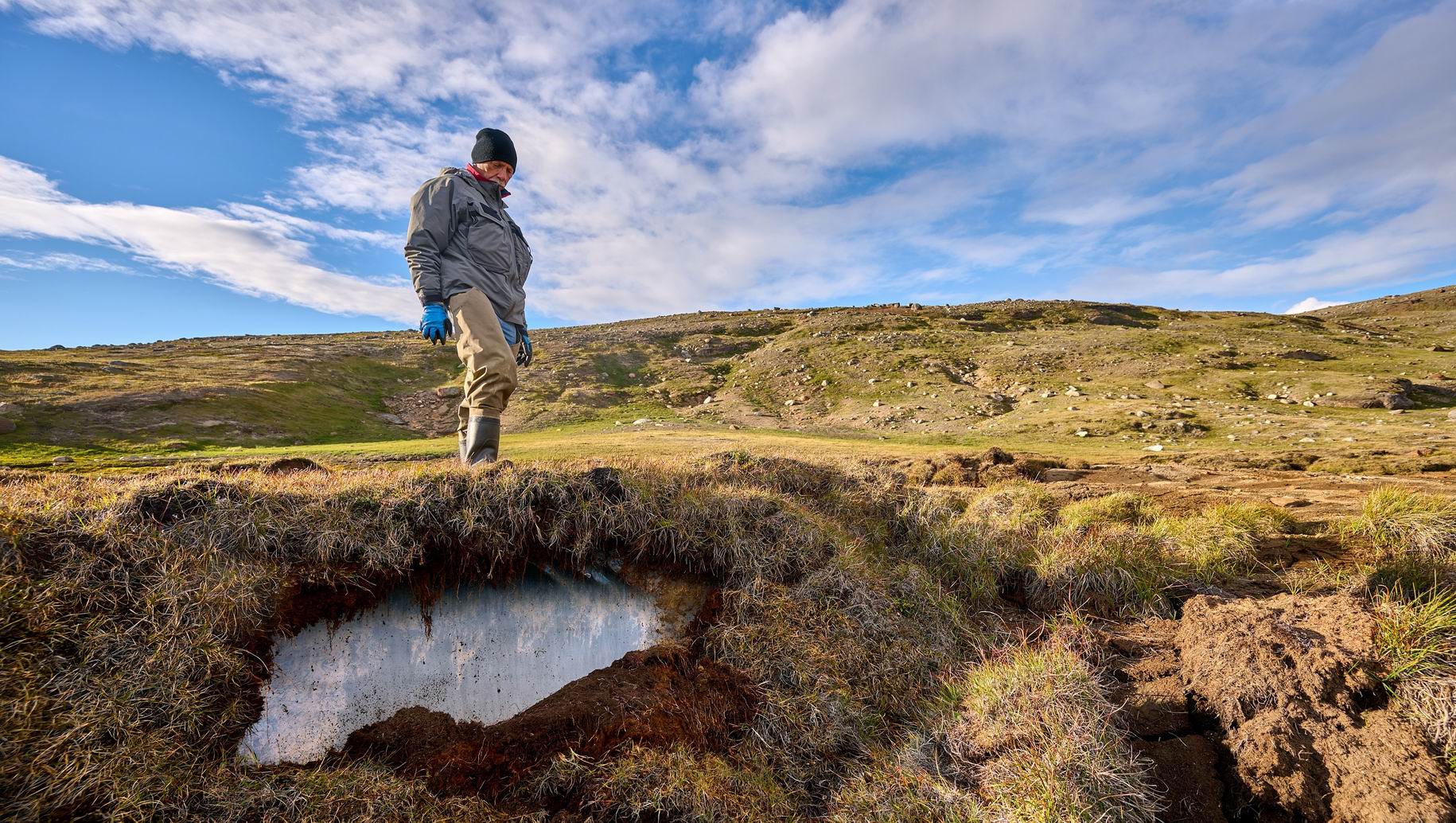Written by Alain Lagacé
Thawing permafrost, landslides, disappearing glaciers, greening of the tundra... What is happening in the Arctic tundra biome was barely imaginable a few decades ago, and yet the impact of the climate change is transforming the landscapes of the far north of Quebec and Labrador.
Plants are gaining ground
In the Torngat Mountains, rising temperatures on the south-facing slopes of the valleys accelerate plant growth. The dwarf willow is gaining more and more ground on the rocky sides of the fjords. Just 40 years ago, when I visited the fjords and valleys of the Labrador coast, I found only stunted shrubs and barren patches of lichen and moss. Nowadays the changes are remarkable, the landscapes of the tundra are more and more green. In July we can observe large carpets of wildflowers which cover the places most sheltered from the prevailing winds.
Wildlife adapts to change
On the tundra, certain species of birds are more numerous and new species of nesting birds are observed. Black bears are ubiquitous in areas with abundant vegetation, and it is quite common to see females with triplets. Caribou have more food and move less. Increasingly scarce sea ice is forcing polar bears to spend much more time wading in rivers in search of fish. The lemming population is more stable, which impacts many predators such as foxes, wolves, and snowy owls.
Melting accelerates
The glaciers are visibly retreating and the thick layers of sparkling snow that were found on the eastern slopes of the mountains throughout the summer have practically all disappeared. In the highlands, the thick layer of ice that accumulated in riverbeds during long of extreme cold extended could reach 5 to 8 meters thick. This ice cover lasted all summer, but in recent years we can barely see any ice in August.
The melting of permafrost is probably what is most dramatic. Before the global rise in temperatures, only the upper layer of land thawed in summer and allowed the development of vegetation, but now the marked effect of global warming causes thawing in deeper layers and when these are rich in ice, the ground sags and turns into mud.
The Arctic tundra biome in times of climate change is a fascinating region to discover, for all those who want to live a truly enriching experience in one of the last great wild spaces on our planet.
Photo credit: Fabrice Simon
…
Developing and designing your tailor-made trip is our specialty!
Specialist in tailor-made trips for more than 30 years, take advantage of our know-how and our knowledge, to live authentic discovery experiences in the heart of one of the most beautiful, preserved regions in the world, with a choice of circuits adapted to your needs. tastes, your interests and what you really want to discover.
Alain Lagacé – alain@goldenpeninsulatours.com


